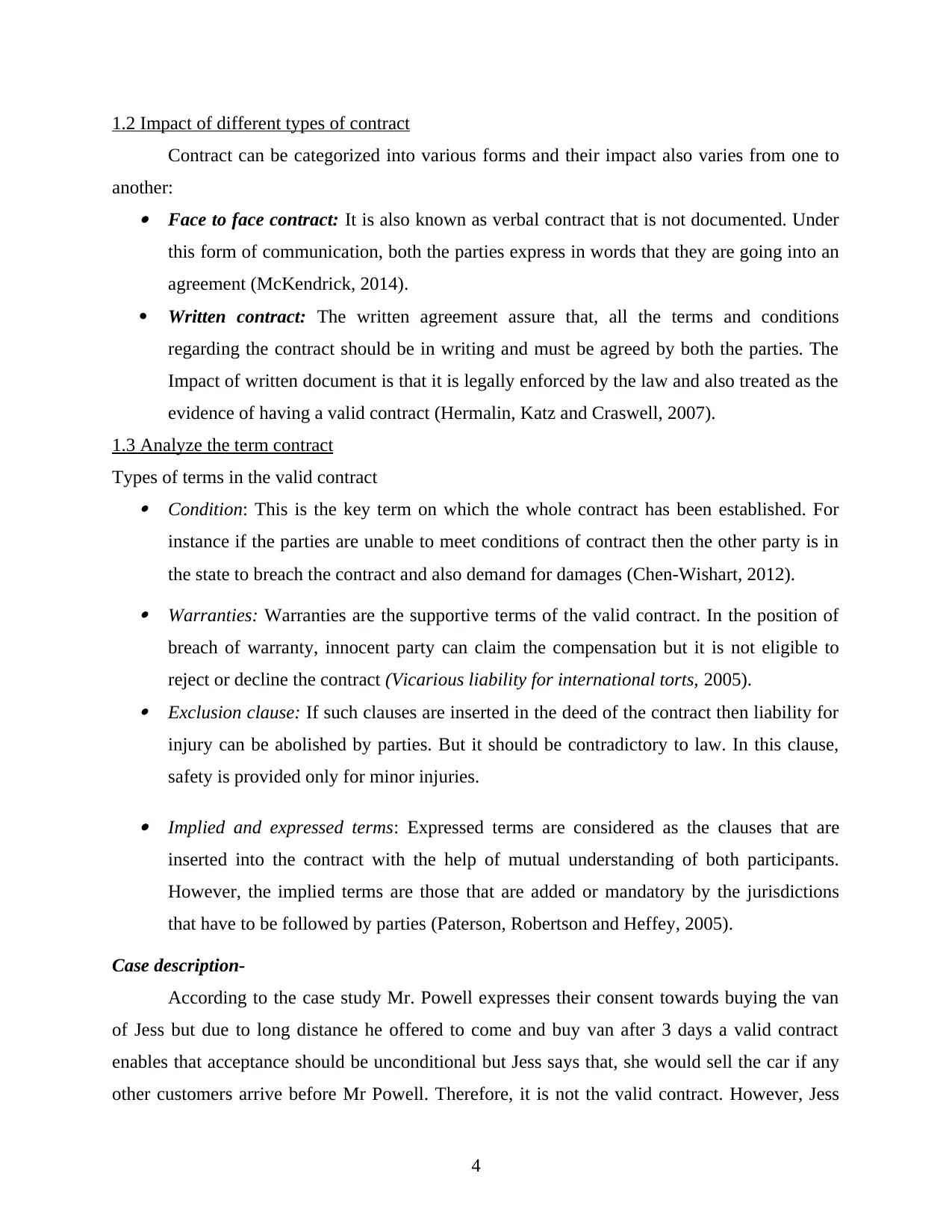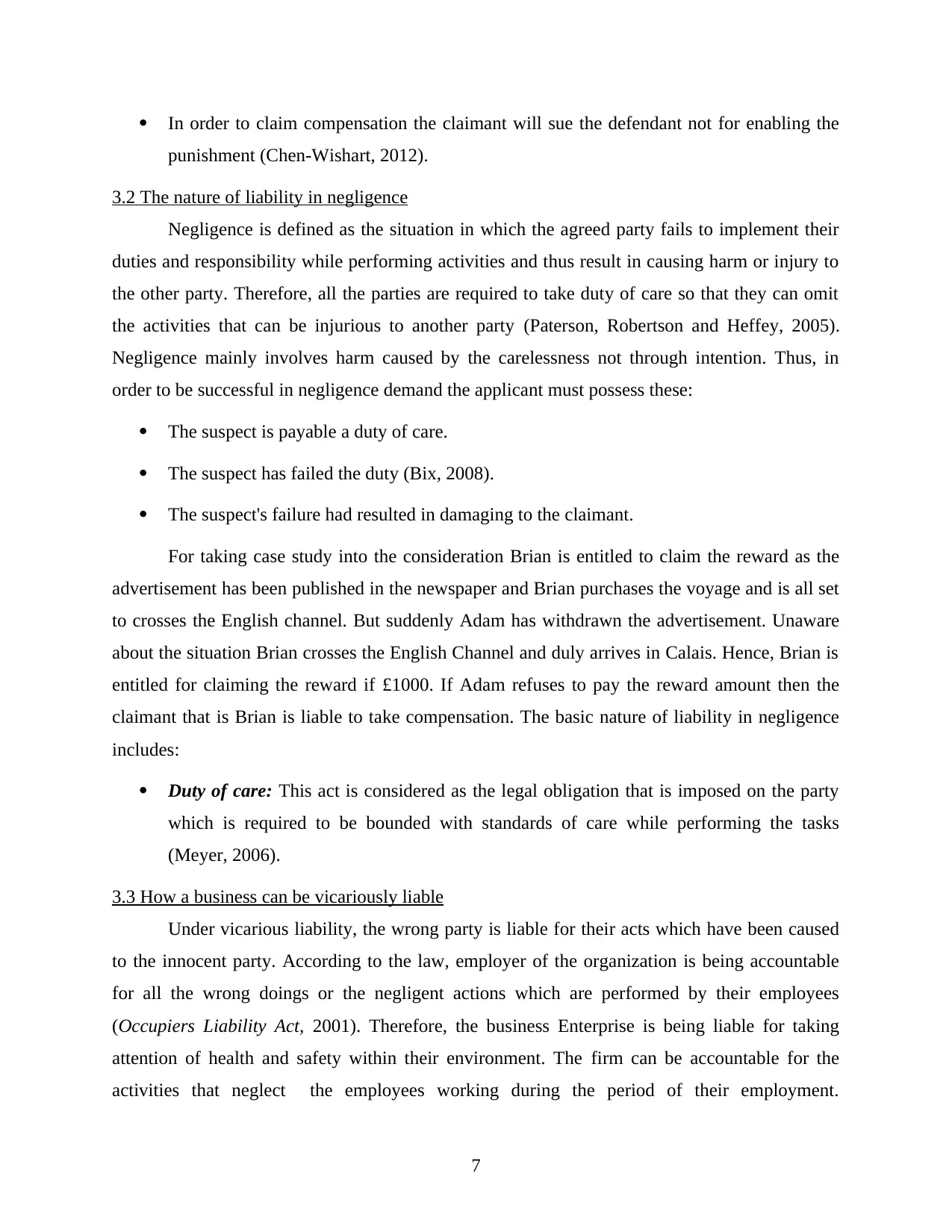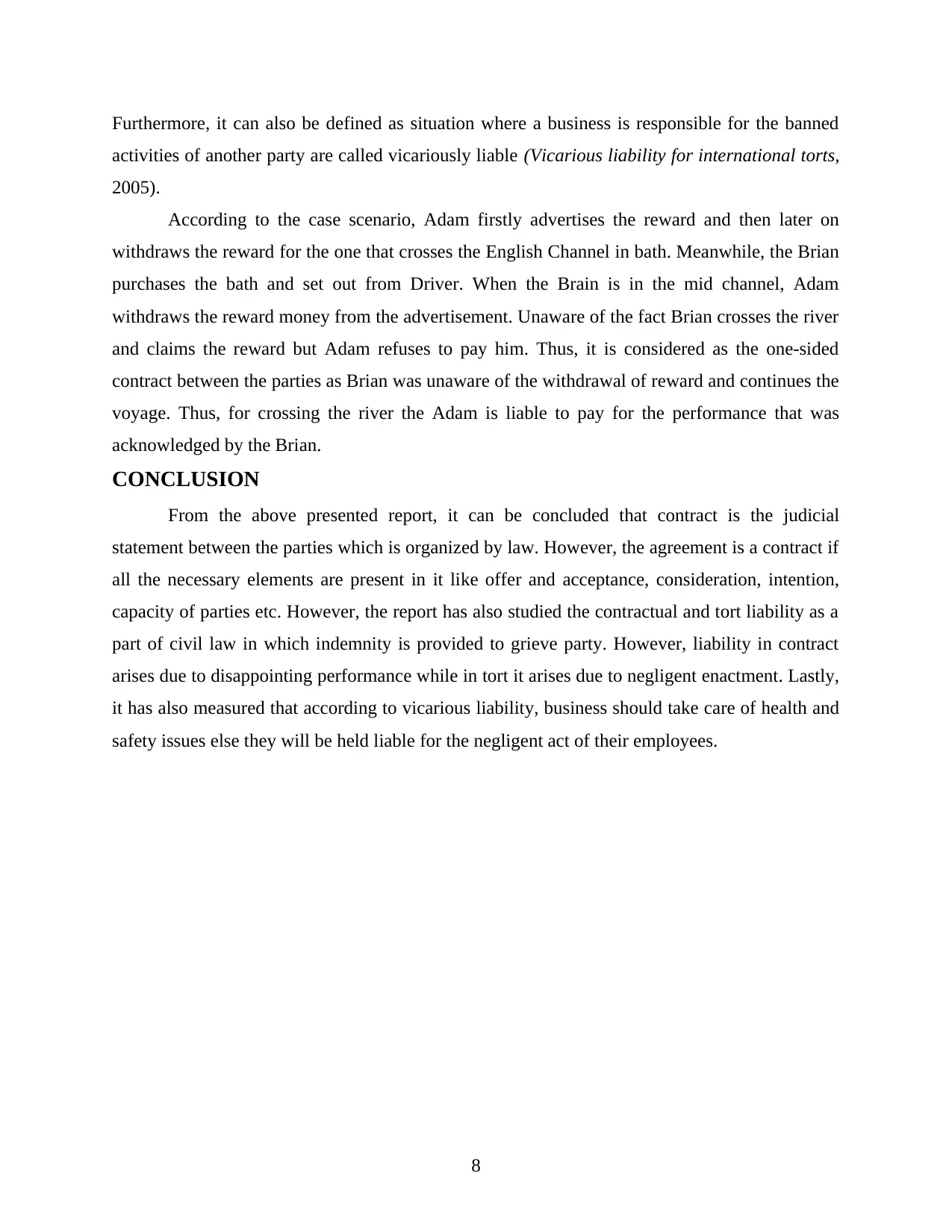Brian had crossed the English Channel in a bath, unaware that Adam had withdrawn an advertisement offering £1000 to anyone who did so. As Brian had performed the task as per the original advertisement, he was entitled to claim the reward. However, Adam refused to pay, leading to a situation where Brian is liable to take compensation for his efforts. The concept of vicarious liability comes into play here, where an employer or business can be held responsible for the actions of their employees. In this case, if Adam had employed someone to withdraw the advertisement, he would have been vicariously liable for their actions. Additionally, the assignment discusses contract law and tort liability, highlighting the importance of considering factors such as duty of care, intention, and capacity when forming contracts.
![[object Object]](/_next/static/media/star-bottom.7253800d.svg)
![[object Object]](/_next/static/media/star-bottom.7253800d.svg)








